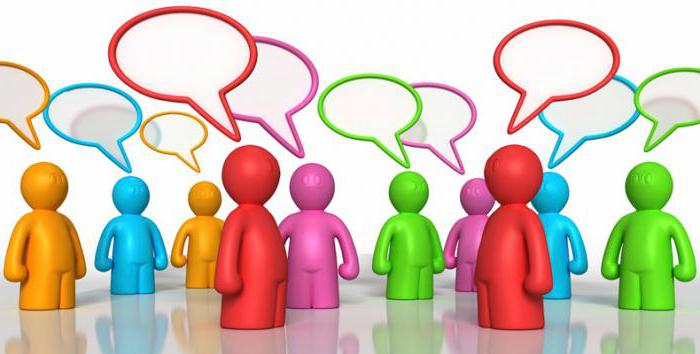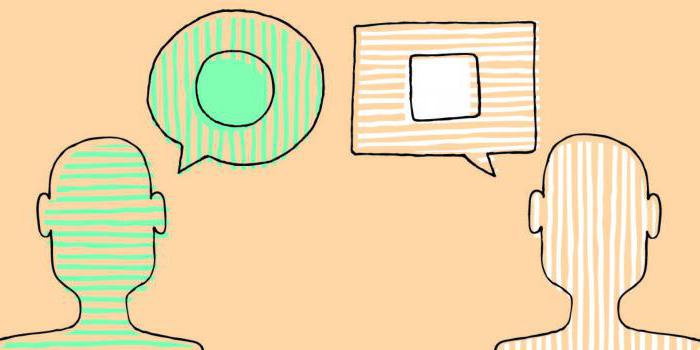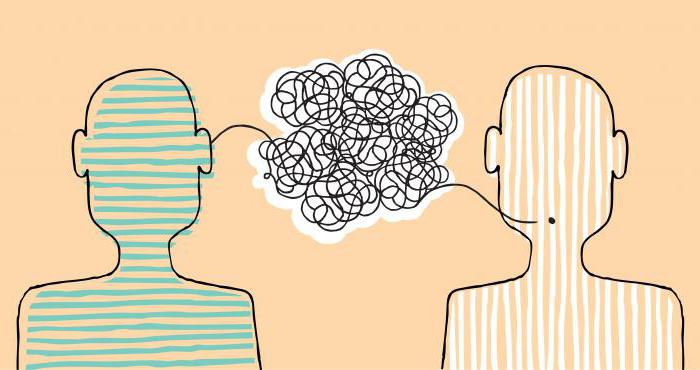The communicative act is one of the key phenomena of pragmatic linguistics. It demonstrates the dependence of language functions on external conditions. In this regard, it is important to understand what is the structure of a communicative act.
What is a communicative act?
The concept of a communicative act is formulated as a segment of the communication process during which information is exchanged through language, signs and symbols. This is the most general definition of a concept. Also, various linguists give such definitions:
- it is a verbal interaction between two or more native speakers;
- interaction between the sender and the recipient of information;
- a unit of communication consisting of the speech aspect, the audit act (hearing), as well as the communicative situation that determines the relationship between speakers;
- two-way communication process, during which the speaker transmits information, and the addressee responds to it in a certain way.

The structure of the communicative act
Regardless of the conditions under which and on what issue communication takes place, it includes a number of components. The structure of a communicative act can be described as follows:
- A message is a deliberate or random signal that will cause a certain reaction from the addressee. As practice shows, the bulk of the messages are not only conscious, but also thought out and carefully prepared. Not only speech can take place, but also grimaces, interjections and gestures.
- Coding is a process implemented by the sender of a message, which involves the use of a system of signs to identify and consolidate the content. It should be understandable and acceptable to all participants in the communicative act. The channel of information transfer is also taken into account.
- Decoding is the process by which the listener perceives signs and gives them a certain meaning. Moreover, in the decoding process, the content of the message may be distorted, even if it was not subjected to any negative influences.
- Data transmission channel - a system of methods and means through which the sender of the message transmits it to the addressee. In this case, we can talk about both direct communication and the use of modern data transportation technologies.
- Communicative noises or barriers are obstacles that interfere with the transmission of information or its correct interpretation by the addressee.

Who is involved in the communicative act?
The participants in the communicative act may differ depending on the models that are distinguished by several. Particular attention should be paid to such concepts:
- The model developed by Shannon and Weaver includes a data transmission source, channel, receiver, and a specific communication goal. Moreover, they make up a linear model.
- The Jacobson model is functional. The addressee and the addressee take part in it. Particular attention in this model is paid to the message content and coding methods.
Basic language features
Language is the main means of transmitting information that is constantly evolving. In verbal or non-verbal form, people exchange huge amounts of data. It is worth highlighting such basic functions of the language:
- Cognitive function. This refers to the participation in the processes of perception of what is happening and the formation of ideas about the essence of things, concepts and conclusions. In addition, language is a mechanism for the formation, storage and transfer of knowledge between cultures and generations.
- Regulatory function.Connected with the intentions and goals of the speaker. This is what he addresses the interlocutor or the audience for.
- Emotionally expressive function. Through language, the speaker conveys to the audience his subjective psychological attitude to the content of the message. This is achieved through intonation and interjections.
- Actual function (establishing contacts). This refers to aimless communication when it is not the essence of the transmitted information that matters, but the desire to influence the interlocutor. We are talking about on-call talk about art, weather, other topics in order to establish any relationship between the subjects.
- Metalanguage function. It is connected with any difficulties in communicating with a child, a foreigner, or another person who does not fully possess the speech skills available to one of the speakers. Thus, some terms have to be explained in more accessible, generally accepted words.
- Aesthetic function. It is associated with attention to the speech design of the message. Speakers give the text a verbal and sound texture that demonstrates a cultural level.
- Communicative function. It provides interaction between the interlocutors and the transfer of information.
- Ethnic Function. It acts as a unifying factor and a distinctive feature of representatives of individual nationalities.

What are the forms of communication?
Forms of communication between people may vary, depending on conditions, social level, goals and other factors. The following can be distinguished:
- Contact masks. These are formal communications in which it is customary to observe rigor, politeness, participation, or indifference towards the interlocutor. Such forms of communication are used in a formal setting, when you just need to convey or receive information, and not understand the opponent and be imbued with his personality.
- Primitive communication. It is preceded by an assessment of the interlocutor in terms of "utility". If the answer is yes, then a conversation is made with him. Otherwise, it may be rejected.
- Formal role communication. A situation where both the content of speech and the means of delivering it are strictly regulated. In this case, it is not the interlocutor’s personality that matters, but his social status.
- Informal communication. Any contacts between people outside the official framework. Such communication is not regulated and can take place using any means of transmitting information.
- Business conversation. It takes into account the personality characteristics of the interlocutor. Nevertheless, official relations come first.
- Spiritual communication. A trust-informal form that can be used between close friends, relatives, and so on. Absolutely any topic can be raised, as well as any methods of conveying information. Moreover, each participant in the conversation is well acquainted with the personality characteristics of the interlocutor.
- Manipulative communication. It implies personal profit by influencing the interlocutor.
- Ritual communication. Occurs in accordance with scenarios or norms adopted in certain conditions.
- Secular communication. Differs in objectivity and formalization. The interlocutors speak not about what they think, but about what fits into the framework created by society.

Types of communication by content
The structure of the communicative act is largely determined by the content side. Depending on this factors, we can distinguish the following types of communication:
- Material. It aims at the exchange of any objects.
- Cognitive. It implies the exchange of knowledge and facts.
- Air conditioning. In the process of such communication, information is transmitted about the physiological or mental state of the interlocutors.
- Motivational. Occurs with the aim of stimulating the induction of the formation of interests and goals.
- Activity.Occurs in the process of performing any actions and operations in order to demonstrate skills.
The main goals of communication
Many researchers are studying the question of how the structure of a communicative act. In psychology, special attention is paid to the goals of communication. There are eight main ones:
- Contact. Transfer and perception of information with mutual readiness for this process.
- Informational. Reception and transmission of information of any nature.
- Stimulating. Encouraging a person to take any action in the interests of the speaking addressee or third parties.
- Coordination. Helps to organize coordinated joint activities.
- Understanding. Dispute resolution by contract.
- Emotional arousal. Exchange of feelings and emotions.
- Establishing a relationship. Establishing the necessary contacts in work and other areas of human life.
- The influence. Demonstration of power for the purpose of self-affirmation or for the achievement of any interests.

Language Tools and Communication Tools
Language means of communication form the basis of any communication act. These include the following:
- speaking - using a language skill to tell someone specific information;
- listening - the ability to perceive sounding speech and extract from it the necessary information;
- letter - recording information on paper or electronic media for personal use or transfer to third parties;
- reading - the perception of data recorded in written or printed form.
Reasons for unsuccessful communications
It is not enough to study the components of a communicative act. It is important to learn how to properly manipulate them. Inept communication often leads to communication failures. We can distinguish the following main causes of this negative phenomenon:
- Unsuitable communication environment, which negates all the efforts of the interlocutors to establish contact and perceive the information in a high-quality manner. Usually this happens when outsiders voluntarily or involuntarily take part in a communication act. Also, the reason may be an insufficient "degree of acquaintance" of the interlocutors, which prevents contact.
- Violation of parity in communication, as well as neglect of the rules of cooperation or solidarity of the interlocutors. Most often, the reason is the desire of one of the participants to dominate the rest. It starts with a topic selection, and continues with constant interruption questions. Ultimately, dialogue turns into a monologue. Moreover, not the least role in the behavior of the “leader” is played by his social status, excessive emotionality, or low cultural skills.
- The ritualization of live speech communication. This means that all remarks are pragmatic and strictly comply with patterns and ethical standards. With such communication, it is difficult to convey your thoughts and understand the interlocutor. It is only natural that an atmosphere of misunderstanding and understatement arises.
- Inappropriate personal comments. Often the speaker’s inability to arouse sympathy and understanding on the part of the interlocutor prompts him to touch on unacceptable topics and criticize the personal qualities of opponents.
- Unjustified expectations of the listener. Due to sociocultural stereotypes, certain beliefs, psychological barriers and other factors, the listener may not understand what the speaker wants to convey. Also, the reason may be the speaker’s inability to properly formulate and convey his thoughts.

Communicative behavior of representatives of different nationalities
In business and interpersonal relationships, it is important to consider the national characteristics of the communicative act. This is especially important if you need to establish contacts with representatives of other states and cultures. It is worth noting such interesting points:
- Americans most value individuality and individual rights. Outwardly, this may seem a manifestation of selfishness.Nevertheless, respecting themselves, Americans treat their interlocutors in a similar way. They will prefer informal communication to stiff business etiquette. At the same time, in conversation they like to measure material successes, as well as discuss their hobbies.
- The French are gallantry. They like to demonstrate eloquence and are distrustful of the "silent people." The education system is aimed at educating independent people who can think critically. This affects communication. They try to establish business relations through common acquaintances.
- The British are reserved and even closed in communication. They are not prone to frank conversations, and therefore a feeling of understatement and mistrust may arise. Verbosity is considered a sign of bad taste.
- Arabs with reverent respect for their traditions. The speech communicative act is often accompanied by stories about the features and victories of your country. At the same time, it is absolutely unacceptable for business issues to be resolved with women. When dealing with foreigners, Arabs are welcoming, courteous and polite, but keep a certain distance.
- Australians are very talkative and like to argue during the conversation. Representatives of this nation do not like fuss, as well as excessive pedantry. You need to behave calmly and naturally with them.

Conclusion
The communicative act and its components are an integral part of the life of a modern person. Developed communication skills determine success in work and all other spheres of human life. He must constantly improve in this direction.